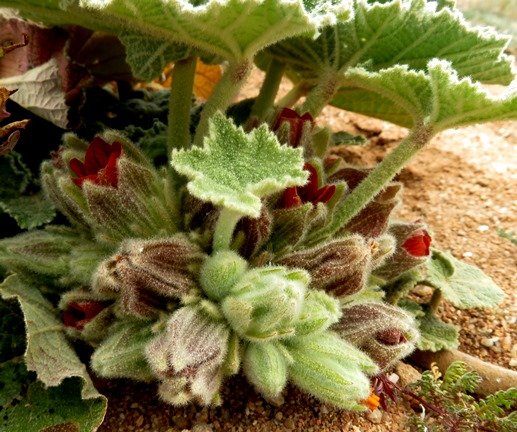Radyera urens

Author: Ivan Lätti
Photographer: Thabo Maphisa
Radyera urens, the sprawling sandpampoentjie, grows in sandy soil in the open under a relentless sun. Its thick-stalked leaves serve as parasols for the flowers. Further protection for the delicate corolla and its contents comes from the tall, pointed, hairy sepals, reaching the petal tips like ramparts battling the heat.
Around the sepals, lower down, the narrow tips of the epicalyx bracts are visible, even furrier than the calyx. All these bits contribute to the corolla covering, particularly also the dense hairs. A bit like people surviving in the hot desert wearing wool.
Searching for the etymology of the generic name, Radyera, is difficult until one discovers that the plant is named after the South African botanist R.A. Dyer (Le Roux, et al, 2005; Leistner, (Ed.), 2000; Eliovson, 1990; iNaturalist).

